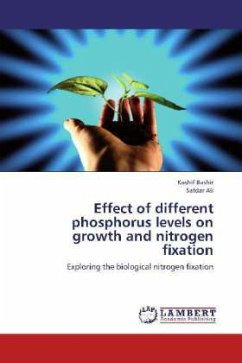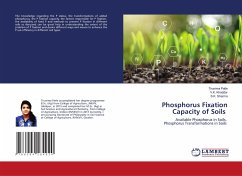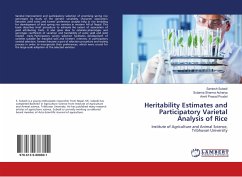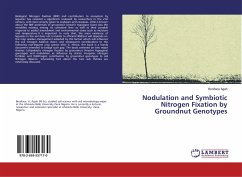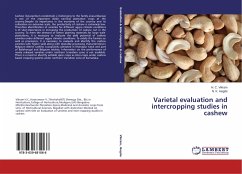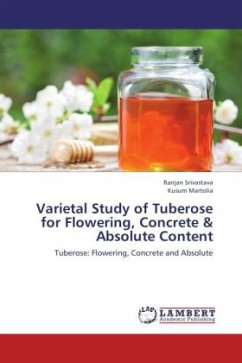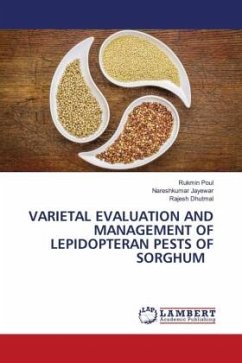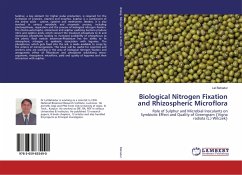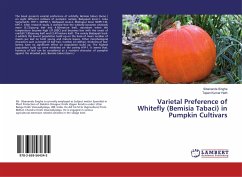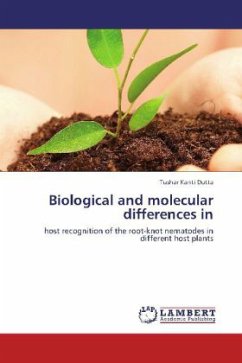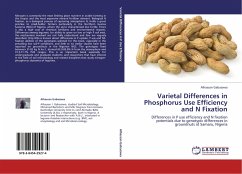
Varietal Differences in Phosphorus Use Efficiency and N Fixation
Differences in P use efficiency and N fixation potentials due to genotypic differences in groundnuts at Samaru, Nigeria
Versandkostenfrei!
Versandfertig in 6-10 Tagen
39,99 €
inkl. MwSt.

PAYBACK Punkte
20 °P sammeln!
Nitrogen is commonly the most limiting plant nutrient in arable farming in the tropics and the most expensive mineral fertilizer element. Biological N fixation, as a biological process of capturing atmospheric N, holds a great promise to small-holder farmers particularly in the Northern Guinea Savanna (NGS) of Nigeria, where the soil is characterized low fertile. There is also a high cost of chemical fertilizers and environmental impacts. Differences among legumes, for ability to grow on low or high P soil exist, the mechanisms involved are not fully understood and few are vaguely described. O...
Nitrogen is commonly the most limiting plant nutrient in arable farming in the tropics and the most expensive mineral fertilizer element. Biological N fixation, as a biological process of capturing atmospheric N, holds a great promise to small-holder farmers particularly in the Northern Guinea Savanna (NGS) of Nigeria, where the soil is characterized low fertile. There is also a high cost of chemical fertilizers and environmental impacts. Differences among legumes, for ability to grow on low or high P soil exist, the mechanisms involved are not fully understood and few are vaguely described. Only little is known about differences in P uptake, P use and N2-fixation abilities of the genotypes selected for this book, especially in the prevailing low soil-P conditions, and little or no similar studies have been reported on groundnuts in the Nigerian NGS. The genotypes fixed between 31-82 kg N ha-1, derived 63.9-85.8% N from the atmosphere and 31.5-71.7% PUE ranges. This is an important book especially for undergraduate and graduate students; and researchers that have interest in the field of soil microbiology and related disciplines that study nitrogen-phosphorus dynamics of legumes.



